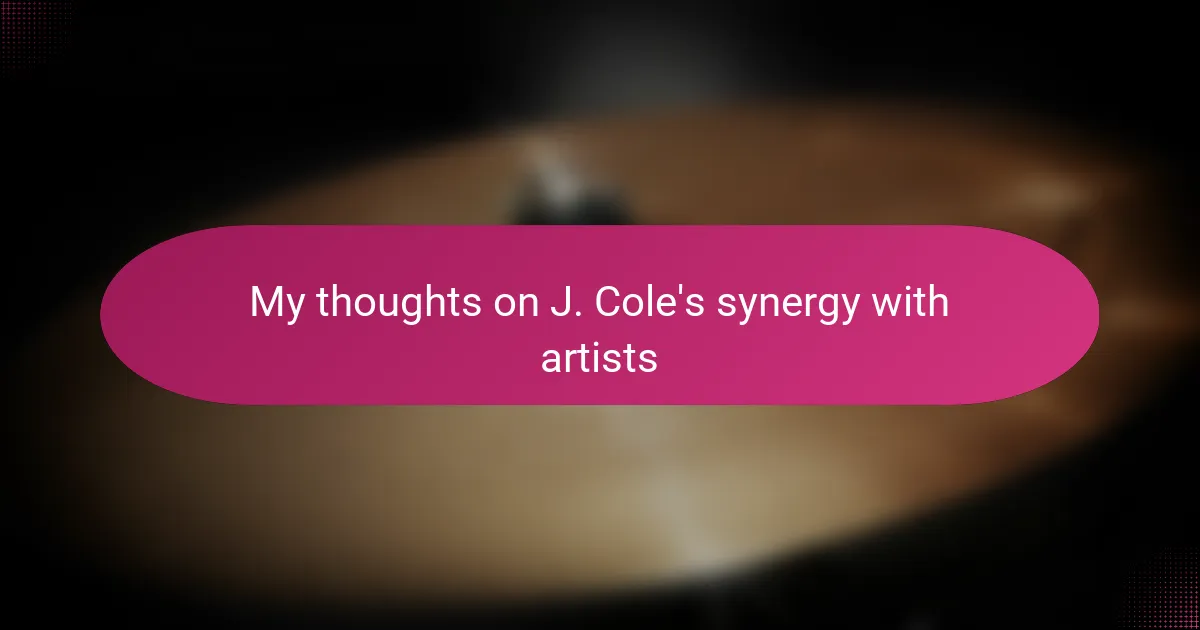Key takeaways
- Synergy in music collaborations enhances creativity by blending contrasting styles, leading to innovative and meaningful outcomes.
- J. Cole’s collaborations stand out for his patience, attentiveness, and ability to balance confidence with humility, fostering organic interactions.
- Successful partnerships often stem from authentic connections and mutual respect, creating a genuine dialogue in the music.
- Open communication and spontaneity during sessions can enhance synergy, allowing for unexpected creativity and memorable moments.
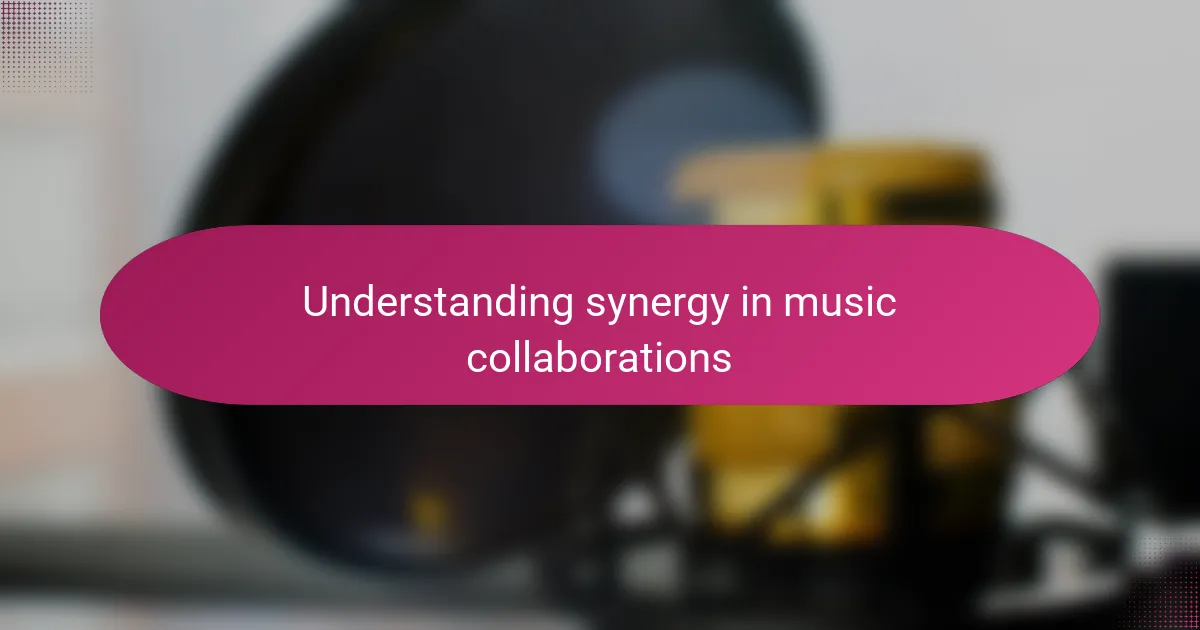
Understanding synergy in music collaborations
Synergy in music collaborations is more than just two artists coming together; it’s about an energy that lifts the creative process to a new level. I remember listening to a track where two rappers fed off each other’s verses so seamlessly, it felt like a conversation rather than a competition. Have you ever experienced a collaboration that just clicked so perfectly it gave you chills? That’s synergy at work.
What fascinates me is how synergy often emerges from contrasting styles rather than similar ones. When artists bring their unique voices and perspectives, the interaction becomes unpredictable and exciting. This tension can spark innovation, creating something far richer than either artist could achieve alone.
In my experience, true synergy is built on mutual respect and understanding. Without that emotional connection, collaborations risk feeling forced or disjointed. It makes me wonder: how much of successful synergy comes from shared vibe versus pure talent? I believe both play crucial roles, but the invisible chemistry is what makes the difference.
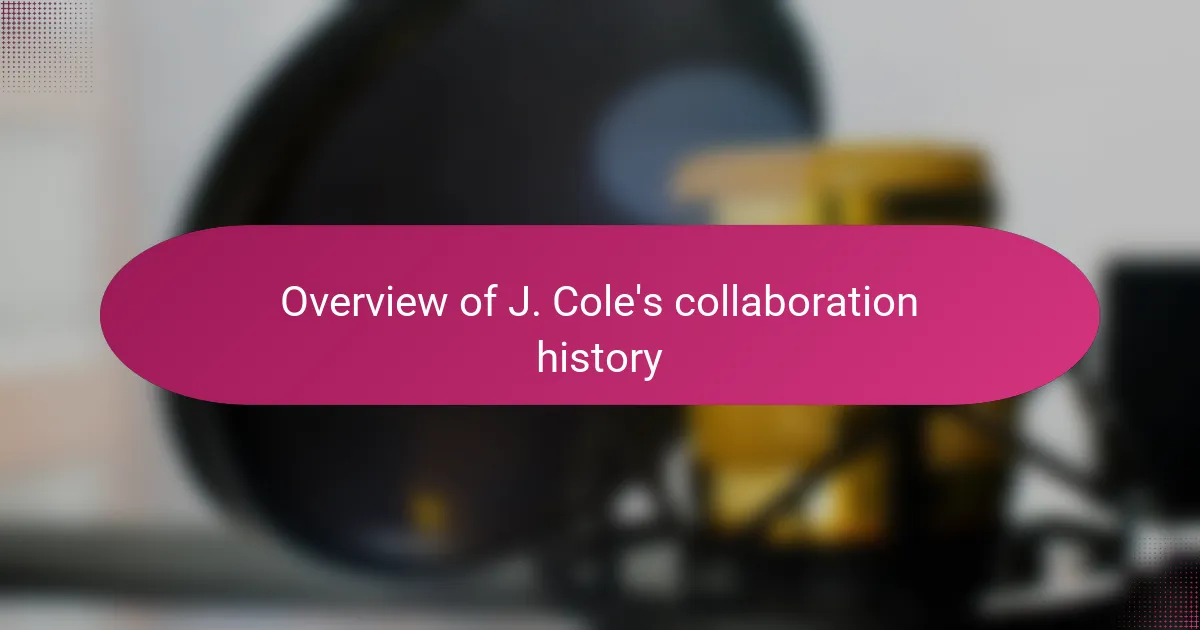
Overview of J. Cole’s collaboration history
J. Cole’s collaboration history is impressive not just in numbers but in the depth of connection he cultivates with fellow artists. I’ve noticed that he rarely jumps on tracks just for hype—each feature feels intentional and adds a meaningful layer to the song. It’s like he’s carefully curating moments where his style can genuinely mesh with others, rather than simply stacking names.
Throughout his career, J. Cole has worked alongside a diverse range of artists—from heavyweights like Kendrick Lamar to rising talents such as Bas. What strikes me is how fluidly he adapts without losing his authentic voice. Have you ever heard a feature where it felt like two artists were speaking different languages? With Cole, that disconnect rarely happens; his collaborations often feel like conversations instead of clashes.
Looking back, some of J. Cole’s most memorable joint efforts come from projects where mutual respect shines through, whether in his dreamville family or with external collaborators. I recall hearing a track where his verse and the guest’s flowed so seamlessly, it made me appreciate the subtle artistry behind these partnerships. It makes me wonder—could this be part of why his synergy with others feels so natural and effortless?
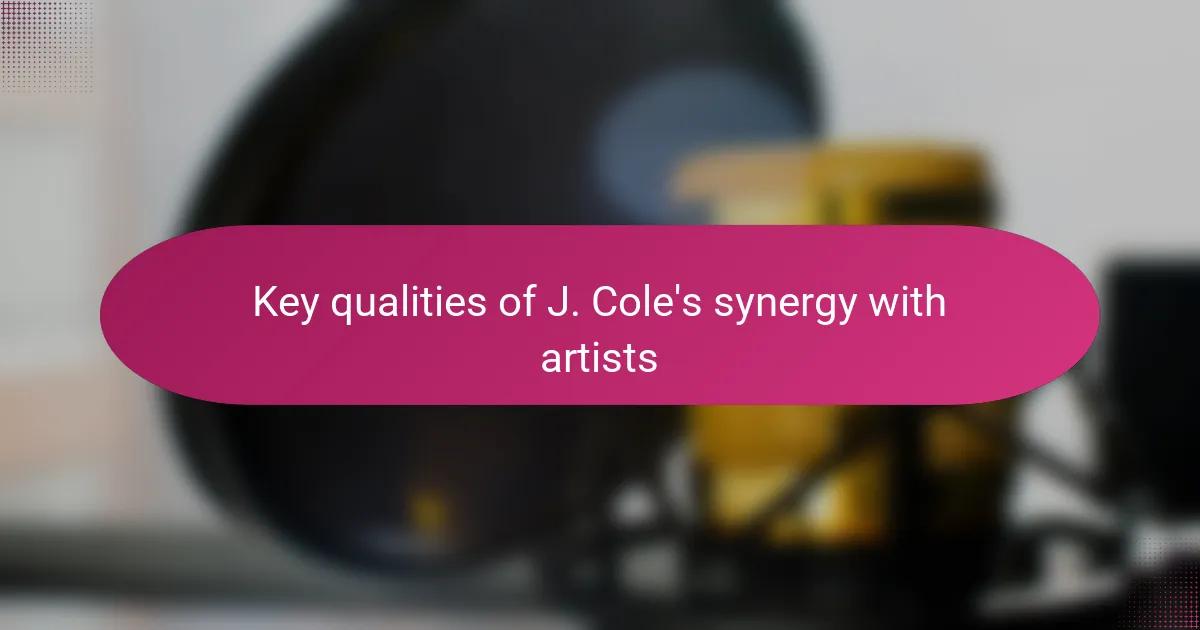
Key qualities of J. Cole’s synergy with artists
One key quality that stands out in J. Cole’s synergy with artists is his patience and willingness to listen. I’ve noticed that instead of overpowering a track, he often waits for the right moment to complement the other artist’s style. Have you ever caught a feature where one rapper seemed to really understand the other’s flow and mood? That’s exactly the kind of attentiveness Cole brings, which makes the collaboration feel organic rather than forced.
Another thing I admire is his ability to strike a balance between confidence and humility. He shows up with strong verses but never tries to eclipse his collaborators. This approach creates space for both voices to shine, turning the song into a genuine dialogue. From my perspective, that subtle interplay is what turns good collaborations into timeless ones.
Lastly, J. Cole’s commitment to authenticity plays a huge role in his chemistry with others. He brings his real self—the emotions, the struggles—without putting on a facade. When artists connect on that level, you can almost feel the shared vulnerability through the music. Doesn’t that kind of genuine connection resonate deeper with listeners? I believe it’s a vital ingredient in why his collaborations hit the mark so consistently.
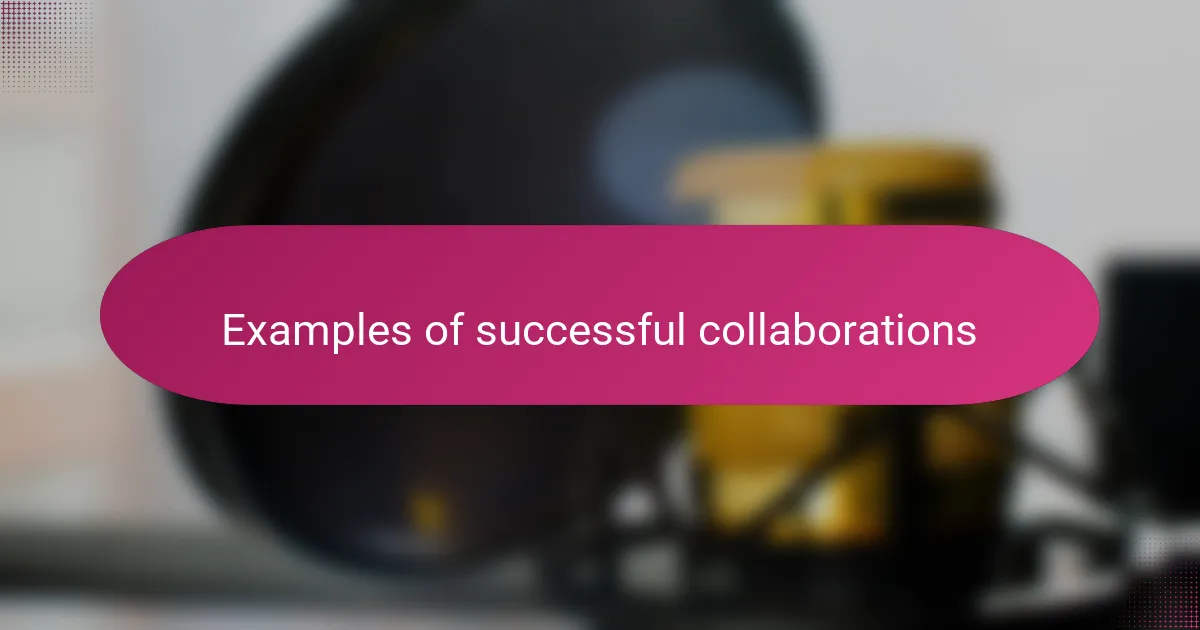
Examples of successful collaborations
One example that immediately comes to mind is J. Cole’s collaboration with Kendrick Lamar on “Forbidden Fruit.” Their styles couldn’t be more different, yet they created this hypnotic vibe that felt both intimate and expansive. It’s like watching two master storytellers exchange verses without stepping on each other’s toes—have you ever felt that rare magic in a track?
Then there’s the work J. Cole did with Bas on “Night Job.” I remember how effortlessly their energies intertwined, each bringing out the other’s strengths. Watching Bas rise alongside Cole made me think about how synergy isn’t just about the song itself, but also the chemistry built over time between artists who genuinely respect each other’s craft.
Another standout is J. Cole’s feature on 21 Savage’s “A Lot.” I was struck by how Cole adapted his usually smooth flow to match 21 Savage’s raw, candid delivery. It felt like a true meeting of minds rather than a forced collaboration. Have you noticed how those unexpected pairings often bring out surprising facets of an artist? That’s exactly what makes Cole’s partnerships so compelling.
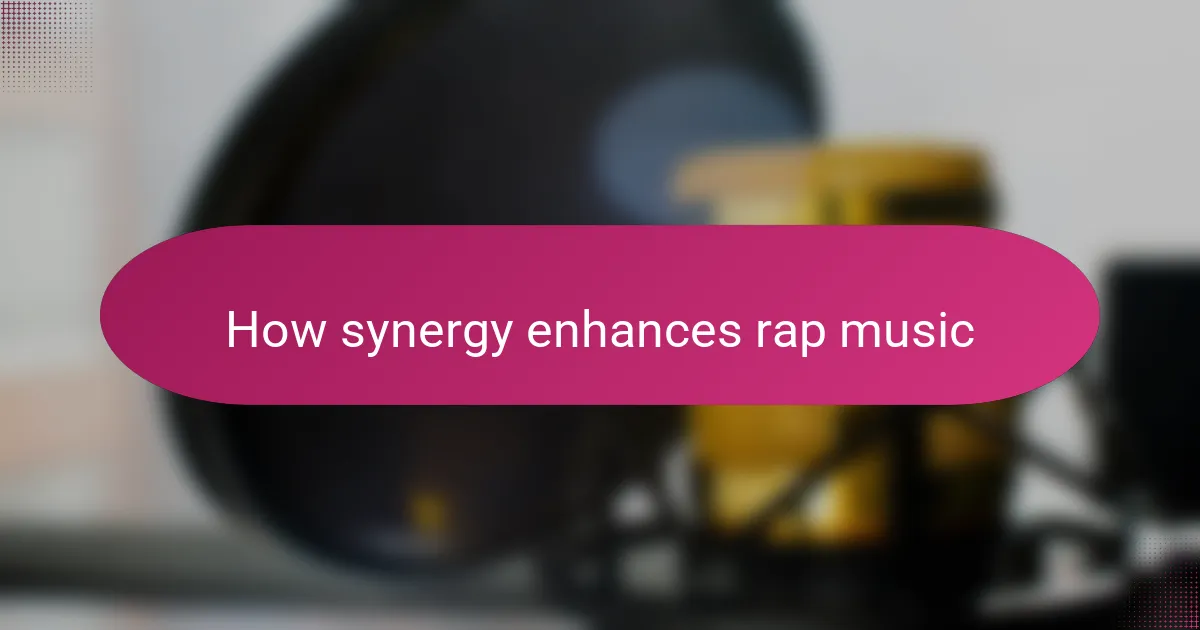
How synergy enhances rap music
Synergy in rap music often acts like a secret ingredient that transforms a track from good to unforgettable. I’ve noticed that when artists truly connect, their energies blend, creating moments where the vibe feels effortless and electric. Isn’t that the kind of magic we all search for in a collaboration?
Sometimes, synergy sparks innovation by pushing each artist out of their comfort zone. I recall hearing a song where the blend of different flows and perspectives surprised me—it felt fresh and boundary-pushing. Have you experienced that thrill when a collaboration opens new doors rather than just sticking to familiar sounds?
What stands out to me most is how synergy encourages vulnerability and authentic expression. When rappers genuinely listen and respond to one another, it turns tracks into conversations that resonate deeper with listeners. Don’t you think that’s why some collaborations linger in our minds long after the beat stops?
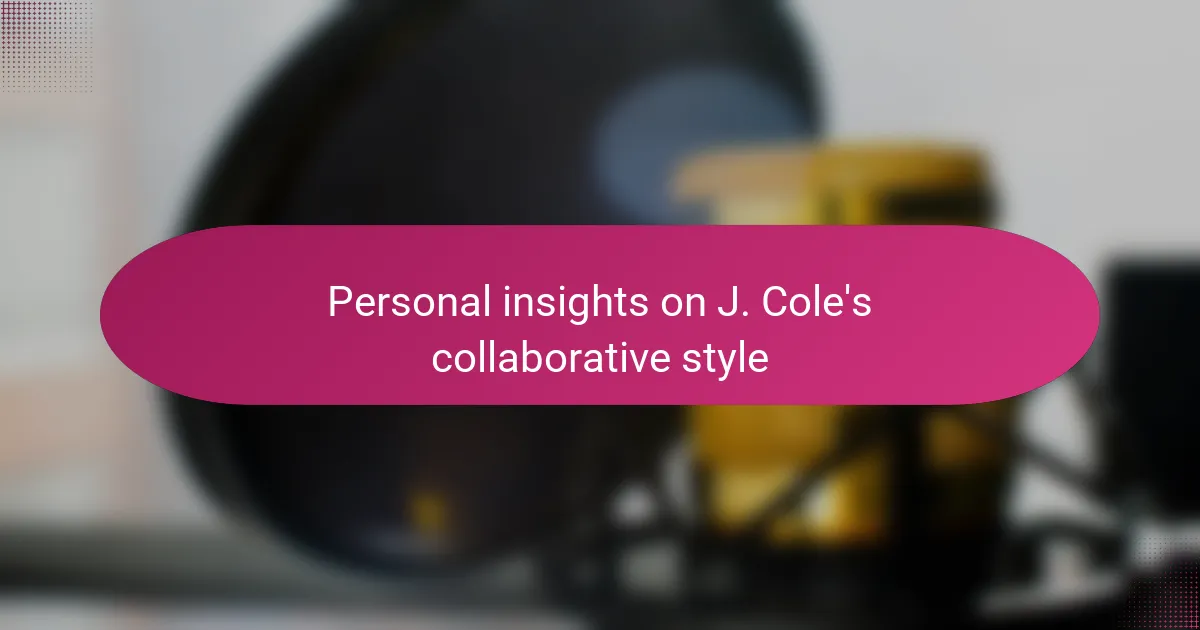
Personal insights on J. Cole’s collaborative style
What I find most striking about J. Cole’s collaborative style is how naturally he creates space for others while still holding firm to his own voice. It’s like he’s having a conversation on wax, not just trading bars, and that kind of give-and-take feels genuine, not rehearsed. Have you ever noticed how some features sound like two artists just happened to be on the same beat, whereas with Cole, it’s always clear there’s chemistry behind the scenes?
From my experience, his patience in collaborations allows the vibe to develop organically. I remember a track where I could literally hear him adjusting his flow mid-verse to complement his partner’s energy—it was subtle but powerful. That attentiveness makes me think J. Cole treats synergy like a craft, not just another item to check off a feature list.
Lastly, I can’t ignore how his authenticity fuels these connections. Listening to him, you feel the emotions aren’t just performed; they’re lived experiences shared between artists. Doesn’t that level of realness make the collaboration resonate on a whole new level? I believe it’s this genuine foundation that elevates J. Cole’s joint efforts beyond typical features into memorable artistry.
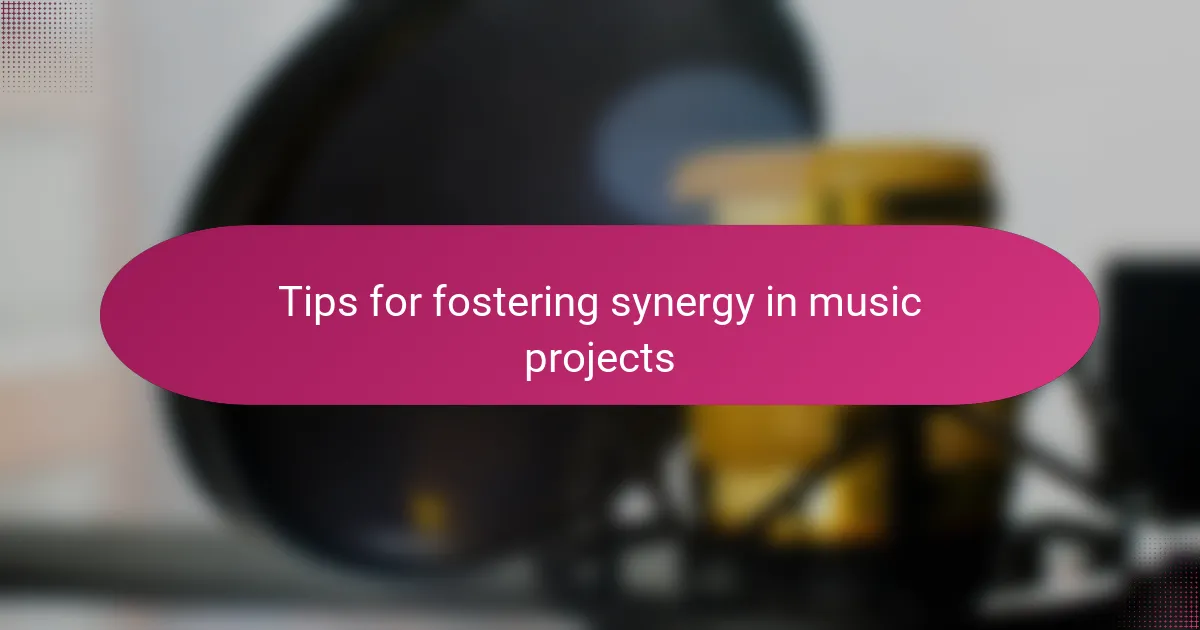
Tips for fostering synergy in music projects
Creating true synergy in music projects often starts with open communication. When artists freely share their ideas and listen actively to each other, the collaboration feels less like a transaction and more like a shared journey. Have you ever noticed how a simple conversation about vision can spark unexpected creativity?
Another tip I’ve found invaluable is allowing space for spontaneity during sessions. Some of the most memorable moments happen when artists surprise each other with improvisations or shifts in tone. From my perspective, this flexibility keeps the energy alive and often leads to breakthroughs that scripted approaches miss.
Finally, fostering mutual respect is non-negotiable. When every participant values the other’s strengths and perspectives, it sets a foundation of trust. I’ve seen collaborations thrive when artists genuinely support rather than compete against one another—doesn’t that make the creative process feel more rewarding?
